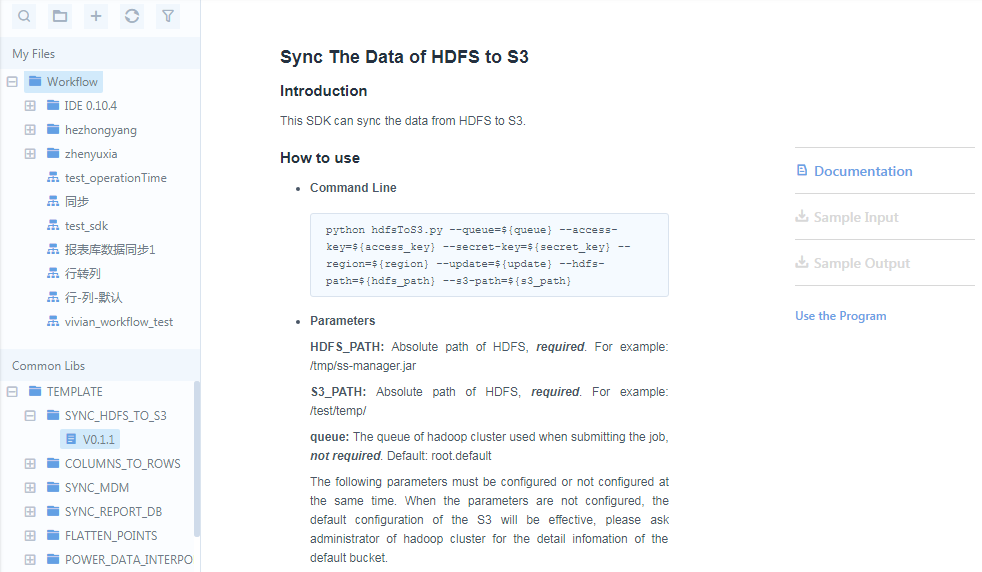Common Library¶
EnOS provides various built-in SDKs in its common library to help you access and process data more conveniently. These SDKs lower the development thresholds and improve development efficiency.
SDKs Provided in the Library¶
SDK Name |
Description |
|---|---|
SYNC_HDFS_TO_S3 |
Synchronize data from a specified path in HDFS to a specified path in an S3 database. |
COLUMNS_TO_ROWS |
Converts the row data of your HIVE table, where each row contains values of all data collecting points of a device at a time, into a table where each row contains historical values of a single data collecting point. |
SYNC_MDM |
Synchronizes master data to HDFS. |
SYNC_REPORT_DB |
Performs one-time synchronization of full-load data from the Hive table to your target table. |
FLATTEN_POINTS |
Converts EnOS raw point data (each row contains historical values of a single data collecting point) to sql-like row data (each row contains values of all data collecting points of a device at a time). |
POWER_DATA_INTERPOLATION |
Interpolates power data, especially for the production missing data. |
HivePartitionDroppedSDK |
Deletes the metadata of both the specified Hive partition and the stored data. |
SYNC_REPORT_STRUCTURE |
Transfers table structure from Hive database to MySQL report database. |
SHORT_TERM_LOAD_FORECAST |
Provides 0-6 days load forecast for different time granularity levels (15 min, 30 min, 1 hour, 1 day) based on historical data and optional weather data for different power consumers in the grid. |
HADOOP_FILE_CRUSHER |
Reduces the number of files by combining multiple small files into several larger files. |
How to Use the SDK¶
The major procedure of using the built-in SDK is as per the below.
In Batch Processing > Data Development, browse the Common Library tree and locate the SDK that you want to use.
Double-click the version of the script and review the details about the script.

Click Use the Program.
In the pop-out window, provide the information for the workflow.
Provide the scheduling settings. For more information, see Creating a One-time Workflow or Creating a Periodic Workflow.